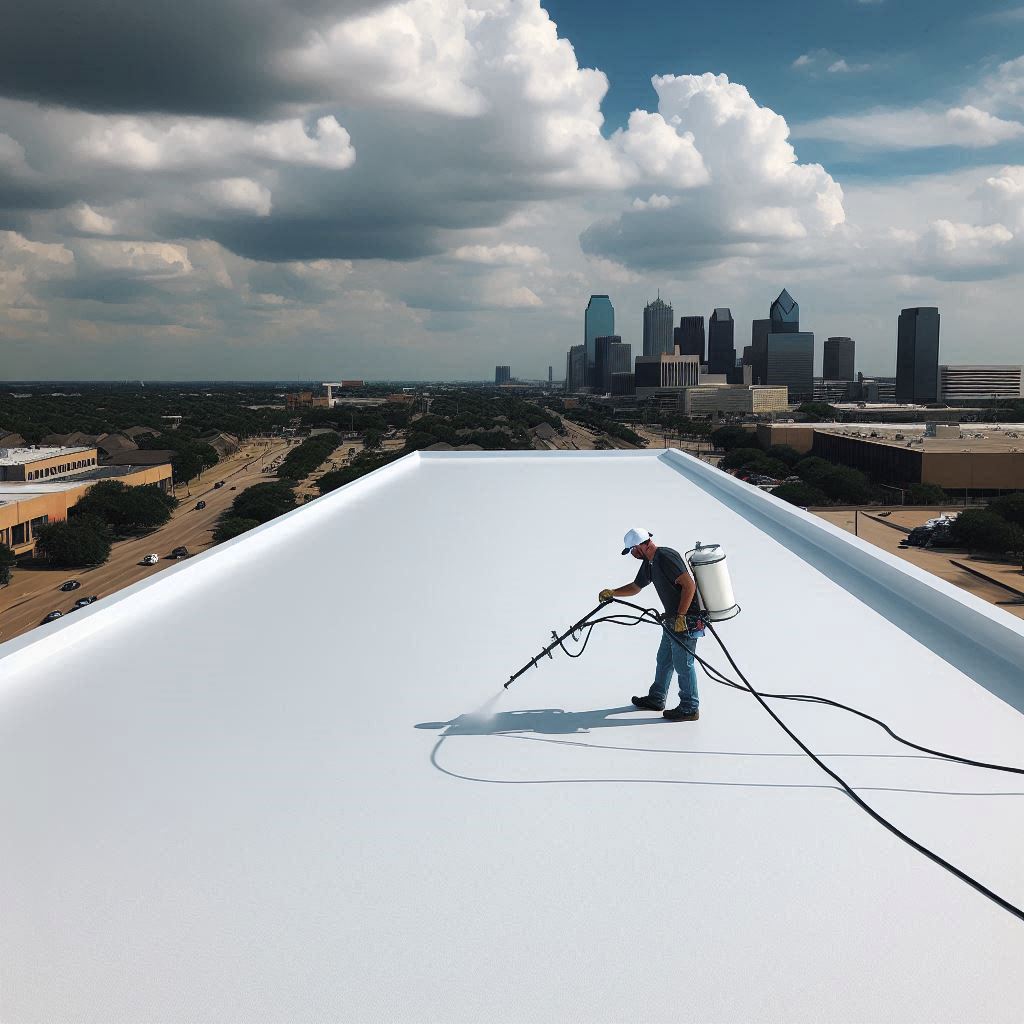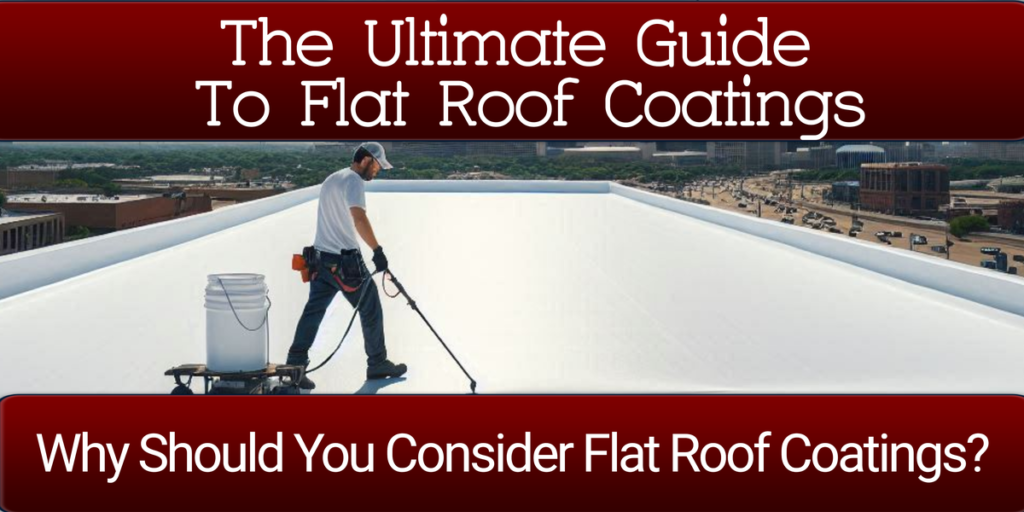The Ultimate Guide to Flat Roof Coatings: Protect Your Investment and Extend Your Roof's Lifespan
Are you a commercial building owner or manager looking to protect your flat roof and save money in the long run? Look no further! This comprehensive guide will walk you through everything you need to know about flat roof coatings, from their benefits to application methods and maintenance tips.
What Are Flat Roof Coatings?
Flat roof coatings are specially designed materials applied to the surface of flat or low-slope roofs. These coatings create a seamless, waterproof layer that protects the underlying roofing structure from the elements. They’re like a superhero cape for your roof, shielding it from UV rays, rain, and temperature fluctuations.

Why Should You Consider Flat Roof Coatings?
Extend Roof Lifespan:
A high-quality coating can add 10-15 years to your roof's life, saving you money on premature replacements.
Cost-Effective:
Coatings are typically cheaper than full roof replacements, making them an economical choice for building owners.
Improved Waterproofing:
Improved Waterproofing: A seamless coating provides excellent protection against leaks and water damage.
Let's break down the most common types of roof coatings:
Types of Flat Roof Coatings
Acrylic Coatings
Acrylic coatings are popular for their affordability and ease of application. They’re water-based, making them environmentally friendly and easy to clean up.
Pros:
- UV resistant
- Flexible in varying temperatures
- Easy to apply and maintain
Cons:
- May not perform well in ponding water situations
- Shorter lifespan compared to some other options
Silicone Coatings
Silicone coatings are known for their excellent water resistance and durability.
Pros:
- Excellent waterproofing capabilities
- Resistant to ponding water
- Long-lasting (up to 20 years with proper maintenance)
Cons:
- More expensive than acrylic
- Can be slippery when wet
Polyurethane Coatings
Polyurethane coatings offer superior durability and impact resistance.
Pros:
- Extremely durable
- Excellent chemical and impact resistance
- Can withstand foot traffic
Cons:
- More complex application process
- Higher cost
EPDM Coatings
EPDM (Ethylene Propylene Diene Monomer) coatings are rubber-based and known for their flexibility and durability.
Pros:
- Highly flexible
- Resistant to ozone and UV radiation
- Long lifespan (up to 30 years)
Cons:
- Can be more difficult to apply
- May require professional installation

How to Choose the Right Coating for Your Roof
Selecting the best coating for your flat roof depends on several factors:
- Climate: Consider your local weather patterns. For hot, sunny areas, a reflective coating like silicone or acrylic might be best. In areas with frequent rain, look for coatings with excellent water resistance.
- Roof Material: Different coatings adhere better to certain materials. Consult with a professional to ensure compatibility.
- Budget: While all coatings offer cost savings in the long run, initial costs vary. Balance your immediate budget with long-term benefits.
- Building Use: If your roof experiences foot traffic or equipment installation, consider a more durable option like polyurethane.
- Energy Efficiency Goals: If reducing cooling costs is a priority, opt for a highly reflective coating.
The Application Process
While professional installation is recommended for best results, here’s a general overview of the coating process:
- Roof Inspection: A thorough inspection identifies any repairs needed before coating.
- Cleaning: The roof surface must be clean and dry for proper adhesion.
- Repairs: Address any cracks, blisters, or damaged areas.
- Priming: Some coatings require a primer for better adhesion.
- Application: The coating is applied using rollers, brushes, or spray equipment, depending on the product and roof size.
- Curing: Allow the coating to cure fully before exposing it to foot traffic or harsh weather.
Maintenance Tips for Coated Roofs
To get the most out of your flat roof coating:
- Schedule regular inspections (at least twice a year)
- Keep the roof clean and free of debris
- Address any damage promptly
- Recoat as recommended by the manufacturer (typically every 10-20 years)
The Cost Factor: Is It Worth It?
While the initial cost of coating your flat roof might seem significant, it’s important to consider the long-term savings. According to the National Roofing Contractors Association, a well-maintained roof coating can save up to 50% compared to a full roof replacement over its lifetime.
Let’s break it down:
- Average cost of flat roof replacement: $5-$10 per square foot
- Average cost of roof coating: $2-$4 per square foot
For a 10,000 square foot roof, that’s a potential saving of $30,000 to $60,000!
Environmental Impact
Choosing a roof coating isn’t just good for your wallet – it’s good for the planet too. The Cool Roof Rating Council reports that reflective roof coatings can significantly reduce urban heat island effects and lower overall energy consumption in buildings.
Conclusion
Flat roof coatings offer a cost-effective, environmentally friendly way to protect and extend the life of your commercial roof. By choosing the right coating and maintaining it properly, you can enjoy significant savings on energy costs and avoid premature roof replacement.
Ready to take the next step in protecting your flat roof? Consult with a professional roofing contractor to determine the best coating solution for your specific needs. Your roof – and your wallet – will thank you!



